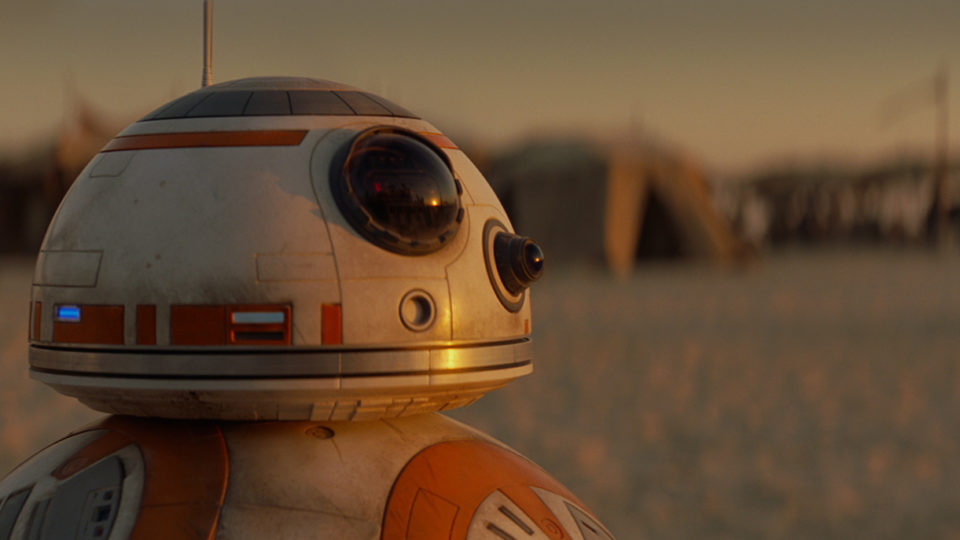Bob Iger held up his phone and asked, “Can you build this?”
In The Walt Disney Company CEO’s hand was an image of the BB-8 droid from Star Wars: The Force Awakens, months before it would first be seen by the public.
“And of course, then this was top secret,” David Min, Disney VP of Corporate Innovation, said. “Nobody knew what the BB-8 was.”
Iger was showing this highly confidential photo in 2014 to the team at Sphero — a small, outside company that had developed a robotic ball for children to play and learn with.
“They came running out to my office and said, ‘We’re going to build a BB-8! We’re going to build a BB-8!’” Min recalled. “Of course, none of us knew what it was, so we all kind of had a blank look on our faces.”
Sphero was on the Disney lot because it was one of the inaugural participants in the Disney Accelerator, a program Min helped create “to add external innovation to the Walt Disney Company.”
Moments after Sphero broke the news of their latest project to the Disney Accelerator team, Iger walked in and explained that Sphero would be building the next Star Wars toy for Disney.
“And the rest is history,” Min said.

Using Technology to Advance Storytelling
Disney Accelerator — which celebrates its 10th anniversary this year — selects growth-stage companies to “work closely with our different executives across the company to help advance not just their company, but what we can do together to create new media and entertainment experiences” at Disney, Min explained. The team constantly thinks about “what we can do to use that technology to advance our storytelling and create new experiences that we can provide to guests.”
Past participants have included companies from such diverse fields as robotics, augmented and virtual reality, and educational learning.
“Disney as a company is a master of storytelling, and of course, that takes so many different forms,” Bonnie Rosen, Disney Accelerator General Manager, said. “What’s really exciting is bringing in these new technologies that can inspire our creatives.”
10 years and more than 60 participants later, the program continues to breed more innovative companies and collaborations — such as Epic Games, Kahoot, and Attentive — that are at the forefront of new frontiers.
“Drove straight out here to Glendale”
The program has evolved from its early years when, as Min notes “we did this with an outside partner and we brought early-stage companies into the program.”
Some were so new that one of the early companies “was actually three people that had just graduated from NYU, jumped in their car, and drove straight out here to Glendale,” Min said.
“Today we look for growth-stage companies,” Min said. “Companies that have a product or market, that have top tier investors, and the ability to scale their company to what we have to offer.”
Disney can “help them with distribution of their technology, creating new experiences and imagining new ways to leverage their technology to create new experiences,” Min said.
Bonnie Rosen was a director at FEM Inc., a 2015 participant in Disney Accelerator, before Min encouraged her to join the program in 2021 as the General Manager.
Past Participants, Current Leaders
“We’re bringing in companies that are at the forefront of their industries, respectively, and thinking through ‘How can we build this over time?’” Rosen said. “‘How can we make sure that this is growing into something that does eventually end up in front of a Disney fan?’”
In 2017, when they were just launching Fortnite, Epic Games was brought in for licensing Disney IP and “to help us build an augmented reality world,” Min said. “And in addition to that, they were developing the Unreal Engine.”
Disney was quickly able to leverage the Unreal Engine across the company — everywhere from Industrial Light & Magic’s development of Stagecraft technology, to use in theme parks experiences like Millenium Falcon Smuggler’s Run, to ESPN broadcasts and the development of the ESPN Catalyst Stage studio.
“Disney looks at the entertainment industry as a whole, with a really wonderful and holistic vision,” Tim Sweeney, co-founder and CEO of Epic Games, said. “As Fortnite took off and grew, our partnership with Disney has grown.”
Part of that growth is Disney’s $1.5 billion investment in Epic and plan to build a new games and entertainment universe full of Disney stories and experiences.
“I feel it’s creating a new type of ecosystem that transcends anything that previously existed,” Sweeney said.
Another successful Disney Accelerator alumni is Kahoot!, a Norwegian company, which has “become the core of how students interact with their teachers and interact with their learning on an everyday basis, with Disney characters infused into that process,” Rosen said.
“Since we started this project, we have seen the interest increasing,” Eilert Hanoa, Kahoot’s CEO, said. “We have seen the new movies coming out and then adding more value and adding other flavors to what we can offer. This is something we really want to continue with Disney.”
“When Kahoot! entered in 2017 they had just millions of users,” Min explained. “Now they have over 1.6 billion participants using the platform.”
Around The Corner
“Disney doesn’t do anything by accident,” Rosen noted. “When we are putting our executives’ attentions and minds on to something, they’re really thinking about how to build that from the ground up.”
After 10 years, “there’s the opportunity to expand this program,” Min said. “Whether it’s to new territories across the globe or even in new verticals.”
In the meantime, Min will continue looking at “emerging trends and markets and what the growth strategy is of the Walt Disney Company and how there’s that intersection.”
Rosen remarked that while the Disney Accelerator gives companies unprecedented access to Disney executives and resources, Disney receives “an incredible amount of energy and optimism for what’s around the corner in the future.”